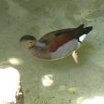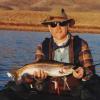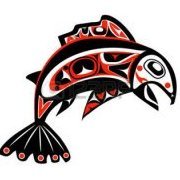-
Content Count
268 -
Joined
-
Last visited
-
UV Resin + UV Resin pigments https://www.amazon.com/Crystal-Sunlight-Adhesive-Jewelry-Decoration/ https://www.amazon.com/Epoxy-Resin-Pigment-Transparent-Concentrated/
-
UV Resin + UV resin pigments https://www.amazon.com/Epoxy-Resin-Pigment-Transparent-Concentrated/dp/B08FJ43CKQ/ref=sr_1_5?crid=2U3QKC1001Y2K&keywords=uv+jewelry+resin+dye&qid=1662932772&sprefix=uv+jewelry+resin+dye%2Caps%2C172&sr=8-5 https://www.amazon.com/Crystal-Sunlight-Adhesive-Jewelry-Decoration/dp/B09NDJFWR8/ref=sr_1_3_sspa?crid=JWMI3FI0HY4N&keywords=UV+resin+dye&qid=1662932710&sprefix=uv+resin+dye%2Caps%2C186&sr=8-3-spons&psc=1&spLa=ZW5jcnlwdGVkUXVhbGlmaWVyPUFFQldXWEhCUFBYOFMmZW5jcnlwdGVkSWQ9QTA5NjM3MDgxRDJLVU9DSkZJWUlSJmVuY3J5cHRlZEFkSWQ9QTA4Mjk5MjIzVUtVQjhYSjg1RFU3JndpZGdldE5hbWU9c3BfYXRmJmFjdGlvbj1jbGlja1JlZGlyZWN0JmRvTm90TG9nQ2xpY2s9dHJ1ZQ==
-

best warmwater/salt fly tying materials budget $100
mikemac1 replied to Noah The Flyfisherman's topic in Beginner's Corner
Your fly selection to both tie and fish is somewhat dependent on where you plan on fishing and what fish are your targeting. Florida is a big place with a lot of saltwater fishing opportunities, not all the same. Beaches, shallow grass flats, deep grass flats, channels, passes, sand bars, mangrove shorelines all are opportunities depending on location. Sone flies are more suited for specific types of inshore opportunities as well. As for species--Speckled trout, redfish, snook, ladyfish, mangrove snapper, Spanish mackerel, pompano and flounder can all be found in typical inshore waters in Florida. The images below display a selection of typical saltwater flies I tie every year for a TU Banquet donation. My fly boxes are full of the same flies when I fish the Central Florida Gulf coast. Easy to Tie with few Materials: Clouser, Seaducer, DT Special, Schninnow, Flash Minnow, Bendbacks, Thunder Creek Minnow, Gurgler More challenging to tie with multiple materials: Surf Candy, Deceiver, Clouser Half and Half, Disco Shrimp, Myaka Minnow, Borski Slider, Shrimpadillo, Redfish Crack, Merkin Crab, Kwan -
https://www.jsflyfishing.com/firehole-fly-hooks J. Stockard Fly Fishing has a sale on Firehole barbless hooks at 15% off. Good deal if you are into barbless hooks.
-
https://www.riverroadcreations.com/foam-body-cutters/single-size.html?product_list_limit=all
-
https://en.wikipedia.org/wiki/Tilapia Tilapia is a broadly applied common name to over a 100 species of cichlids, most of which are omnivorous. Like many fish, the larger they grow, the more they feed on live prey—aquatic insects, worms, baitfish, etc. There are multiple species that have established viable populations in the U.S.
-
If you can find a copy of: Kaufmann, Randall; Kaufmann, Mary (2008). Fly Patterns-Tie Thousands of Flies. Moose, WY: Western Fisherman Press. p. 169, 236-7. ISBN 9781885212238. Kaufmann describes almost 2 dozen variations of the stimulator. Some are shown at https://en.wikipedia.org/wiki/Stimulator_(dry_fly)
-
It came to me about 15 years ago while fishing the channels on the Madison River. I’d hooked a nice brown on a fly I can’t remember. When it came to hand, it was regurgitating several still wiggling leeches. They were fat and large—at least 3 inches in length. What struck me was their coloration—a mottled olive brown. Unfortunately, I didn’t have any “leech” patterns with me at the time but made a mental note to do some research and tying when I returned home. While researching various pattern references, I stumbled on a leech pattern that used zonked Pine Squirrel (Tamiasciurus) in a fashion similar to traditional bunny leeches. What struck me at the time about this particular pattern was the way the tyer had palmered the zonked pine squirrel to create the body of the fly along the entire hook shank. The tail of the fly was still the traditional strip of zonked fur and the fly was heavily weighted with a large cone head. I didn’t have any zonked Pine Squirrel at the time but quickly found some at one of Bozeman’s many fly shops. I didn’t fish heavily weighted flies so the cone would have to go. No need for the weight with a good 30’ sink tip. Also, I wasn’t fond of the zonked fur for the tail. It just didn’t give the fly the profile I wanted. This is where the “dog” comes in. Finn Raccoon “dog” fur was ideal for tails on longer, woolly bugger style flies. There were lots of colors available and it became easy to craft what I started calling: Pine Squirrel Woolly Buggers. They have evolved a bit in the last decade, but they still are my “go-to” fly for slinging streamers on SW Montana rivers. On a guided float several years ago, the guide happened to tie on a “Sparkle Minnow” that proved pretty productive on the day. Today, many of my Pine Squirrel Woolly Buggers include elements of the Sparkle Minnow pattern. Why does the Pine Squirrel Woolly Bugger work? Here’s my theory. Depending on color(s) it might resemble one or more of four common trout foods in SW Montana rivers. Clearly, leeches are available to trout in a lot of water. Sculpins, juvenile whitefish and suckers, and trout fry are also available just about everywhere. In any water where the Salmon Fly is prevalent, predominately black buggers certainly resemble the large salmon fly nymphs. Finally, confirmed by regurgitated nymphs, large dragon fly nymphs can be found in a lot of backwaters along our rivers. Charlie Brook’s Assam Dragon isn’t far off from the Pine Squirrel buggers. Basic Pattern recipe Hook: #1-4 streamer (Firehole 811 is my favorite) Thread: UTC 140 (I tie most of mine with Fl. Orange) Weight: 10-15 turns of .015 lead free wire at the middle of the shank Undertail: Angel hair tied full and clipped short Tail: Two layers of Finn Raccoon separated by a few strands of flash Body: Palmered Zonked Pine Squirrel Rib: Medium or BR Wire Variations and tying tips. Tails can be made from marabou although it is not as durable as Finn raccoon or arctic fox. The Angel Hair clump at the hook bend provides stiff support to the tail hair, keeping it from fouling around the hook. Two colors of pine squirrel can be used to create a bi-color fly. Substituting a flash chenille such as Palmer chenille or EP Minnow brush for a portion of the body gives the fly a Sparkle Minnow look. Red or orange gills can be simulated by coloring the 1st 3/4” of minnow brush with a permanent marker. Probably the single most important tip when using pine squirrel zonkers in this way is width, how they are tied in and the creation of a smooth underbody. The ideal zonker strip is 1/8” wide. Narrower than that and the stretch will thin out the fur. Too wide and coverage is uneven. Once the tailing is in place, the zonker strip is tied in at the hook bend with the fur side down and fur pointing backwards. When tying in tailing, it should start behind the hook eye to create a smooth, larger diameter underbody that provides a clean foundation for the pine squirrel strip.
-
I found myself in a similar situation many years ago. I tie way too many flies to store them in fly boxes. But the consequence of tying so many flies was that I had a lot of empty hook boxes. So, now when I tied a dozen flies, they immediately go into an empty hook box which are stored in large craft boxes. I have several of them labeled Dry, Nymph and Streamer. You'd be surprised how many flies you can store this way. The one upside of this method is that when I want to try a new pattern out on the river or have tied a bunch of extras of my favorite flies, I can just pop the hook boxes into my pocket or boat bag and not have to bother transferring them to a fly box. Works for me. n
-
Wow! Opened up three nice bunches of flies this morning from Hellmtflies, Walt and Laura Ryan and Camo Clad Warrior. Thank guys.
-

Fly Tying Material Hoard - Madison Gallatin TU
mikemac1 replied to mikemac1's topic in The Fly Tying Bench
Unfortunately, the old guy didn't give up his hook stash. -
Thanks to a generous donation of a life-time supply of fly-tying materials from an aging Bozeman angler who no longer ties flies. MGTU is auctioning off 19 lots of fly-tying materials and two fly rods on EBAY. 100% of the proceeds go the support the MGTU mission: To conserve, protect and restore cold-water fisheries and watersheds in SW Montana. For those that might be interested, the 19 EBAY lots are listed at: https://www.ebay.com/sch/mmstamps/m.html. Might be something there you all might need. Mike Cline Bozeman, Montana
-
So Now You Are Hooked!
-

Ain't I Attractive Swap - Flies mailed/Swap Closed
mikemac1 replied to WWKimba's topic in Fly Swaps & Contests
An assortment of Humpies are in the post today. -
The Carey Special
- 13 replies
-
- pheasant rump
- fly tying
-
(and 1 more)
Tagged with:




